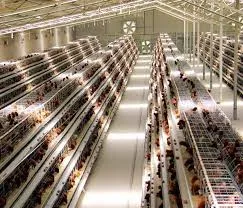fish feed manufacturing machine
Dec . 12, 2024 10:14 Back to list
fish feed manufacturing machine
The Significance of Fish Feed Manufacturing Machines in Aquaculture
Aquaculture is a rapidly growing industry that plays a crucial role in meeting the world's increasing demand for seafood. With the global population projected to reach over 9 billion by 2050, the need for sustainable and efficient fish farming practices is more pressing than ever. One of the key components of successful aquaculture operations is high-quality fish feed, which is where fish feed manufacturing machines come into play.
Fish feed manufacturing machines are specialized equipment designed to produce feed pellets tailored to the nutritional needs of various fish species. These machines streamline the feeding process, thereby enhancing the overall efficiency of aquaculture operations. The advancement of technology in this sector has made it possible to create nutritious and digestible fish feed that promotes healthy growth rates and reduces feed wastage.
Components of Fish Feed Manufacturing Machines
A typical fish feed manufacturing machine consists of several critical components. The first is the grinding system, which pulverizes raw materials such as fish meal, soy flour, and cereals into a fine powder. This ensures that the nutrients are evenly distributed throughout the feed.
Following the grinding process, the mixing system combines the powdered ingredients with vitamins, minerals, and additives. Achieving a homogeneous mixture is essential for uniform pellet production and optimal nutrition. Once the mixture is complete, it moves to the extruder, where heat and pressure are applied. The extrusion process not only cooks the feed but also shapes it into pellets of various sizes and textures suitable for different fish species.
Lastly, the drying and cooling systems are critical for ensuring the longevity and stability of the feed. Proper drying reduces moisture content, which helps prevent spoilage and microbial growth, while cooling ensures that the pellets retain their shape and nutritional integrity.
fish feed manufacturing machine

Advantages of Modern Fish Feed Manufacturing Machines
Modern fish feed manufacturing machines offer several advantages over traditional feed production methods. Firstly, they allow for precise control over ingredient ratios and processing conditions, ensuring optimal nutritional profiles tailored to specific fish species. This precision results in healthier fish, which in turn, maximizes yield for farmers.
Additionally, advanced machines often incorporate automation and digital monitoring systems. This not only reduces labor costs but also enhances production efficiency. Operators can track the entire manufacturing process in real-time, making it easier to identify and rectify any issues that may arise.
Sustainability is another critical aspect. Many modern fish feed manufacturing machines are designed to utilize by-products from other industries, turning waste into valuable feed ingredients. This approach not only reduces costs but also minimizes the environmental impact of aquaculture practices.
Conclusion
In conclusion, fish feed manufacturing machines are essential tools in the aquaculture industry that enhance efficiency, sustainability, and fish health. As the global demand for seafood continues to rise, investing in advanced feed production technology will be crucial for fish farmers aiming to maintain productivity while adhering to environmental standards. By leveraging these machines, aquaculture can play a significant role in feeding the world's growing population sustainably. As we look towards the future, the continued evolution of fish feed manufacturing technology will undoubtedly support the industry's ability to meet challenges and seize opportunities in the quest for food security.
-
Hot Sale 24 & 18 Door Rabbit Cages - Premium Breeding Solutions
NewsJul.25,2025
-
Automatic Feeding Line System Pan Feeder Nipple Drinker - Anping County Yize Metal Products Co., Ltd.
NewsJul.21,2025
-
Automatic Feeding Line System Pan Feeder Nipple Drinker - Anping County Yize Metal Products Co., Ltd.
NewsJul.21,2025
-
Automatic Feeding Line System - Anping Yize | Precision & Nipple
NewsJul.21,2025
-
Automatic Feeding Line System - Anping Yize | Precision & Nipple
NewsJul.21,2025
-
Automatic Feeding Line System-Anping County Yize Metal Products Co., Ltd.|Efficient Feed Distribution&Customized Animal Farming Solutions
NewsJul.21,2025






